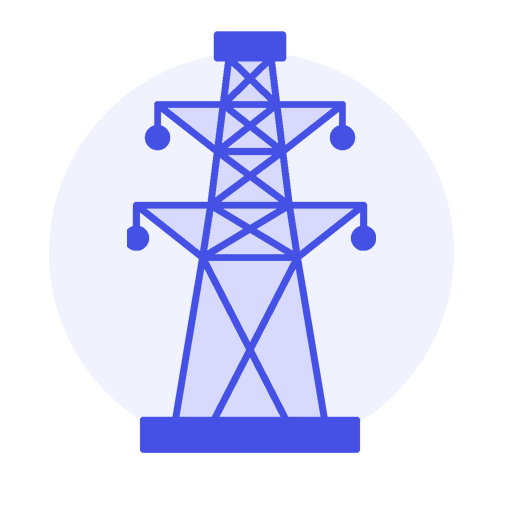Explore the Trades
Check out the many skilled trades in Newfoundland and Labrador and start your career journey here.
Explore the Trades
Interested in working in the Canadian construction industry but not sure which trade is the best fit for you? Check out the many skilled trades in Newfoundland and Labrador and start your career journey here.
Boilermakers are leaders in clean energy Carbon Capture, mini and micro nuclear reactors, LNG plants, hydrogen and involved in the upgrading of current gas oil facilities to meet current Greenhouse emission control standards.
Responsibilities
- Critical thinking and problem-solving skills.
- Ability to work with heavy parts and equipment.
Bricklayers work with masonry materials such as brick, concrete block, stone, structural tile and pre-cast panels to construct and repair structures like walls, partitions, patios, arches, fireplaces, chimneys and other elements. They often work on commercial, industrial and residential buildings.
Responsibilities
- Prepare and lay bricks, concrete blocks, structural tiles or other masonry units.
- Read sketches and blueprints to calculate the materials required.
Smooth and finish surfaces of poured concrete, such as floors, walks, sidewalks, roads, or curbs using a variety of hand and power tools. Align forms for sidewalks, curbs, or gutters; patch voids; and use saws to cut expansion joints.
Responsibilities
- Use power tools for chipping, grinding, cutting, and abrading concrete surfaces.
- Set the forms that hold concrete to the desired pitch and depth, and align them.
Construction/Industrial Electricians prepare, assemble, install, test, troubleshoot and repair electrical wiring, fixtures, control devices and related equipment in all types of buildings and other structures.
Responsibilities
- Read and interpret prints, drawings and codes for layout and installation of electrical equipment.
- Install, service and maintain electrical components such as lighting fixtures, switches, conduit and electrical controls.
A cook plans, prepares, and cooks food items to ensure the highest quality service and experience for guests or workers.
Responsibilities
- Maintaining the kitchen.
- Clean and organize.
Drywall finishers tape and finish wallboard (drywall). They also apply, maintain and restore plaster and similar materials on interior and exterior walls, ceilings and building partitions to make them more decorative, soundproof and fire-rated.
Responsibilities
- Apply assorted beads, reveal and shadow trims that transform ordinary walls into “Drywall Art”.
- Mix and apply filling compounds, then sand them to create a smooth finish.

Elevator constructors and mechanics assemble, install, maintain and repair freight and passenger elevators, escalators, moving walkways and other related equipment. In this career, they are employed by elevator construction and maintenance companies. They may specialize in installation, maintenance or repair.
Responsibilities
- Install and wire electric and electronic control system devices.
- Adjust valves, seals, brake linings and other components.
Floor covering installers, also known as floorlayers, install all types of flooring materials, including carpet, sheet vinyl, linoleum, luxury vinyl tile, hardwood, laminate and even sports surfaces. Floorlayers work in commercial, residential and institutional settings and install floor coverings in structures such as office buildings, schools, hotels, homes and hospitals.
Responsibilities
- Estimate materials, measure and mark lay out lines on surfaces.
- Install materials according to blueprints and specifications.
Glaziers fabricate, install and repair commercial and residential window, door and entranceway systems. They can work with construction glass installation contractors, interior design and architectural firms, and glass fabrication shops. There is always a demand for glaziers!
Responsibilities
- Read and interpret drawings & specifications.
- Measure, cut, fit, install and/or secure glass panes, window parts & architectural metals.
Heat and frost insulators fabricate, assemble and apply insulation materials to plumbing, heating, cooling and refrigeration systems, as well as piping equipment and pressure vessels, to reduce the passage of heat, cold, sound, smoke or fire.
Responsibilities
- Applying and securing insulation.
- Measuring and cutting insulating material using hand and power tools.
Heavy-duty equipment mechanics repair, troubleshoot, adjust, overhaul and maintain mobile heavy-duty construction equipment. Some mechanics in this occupation specialize in hydraulic-operated transmissions and attachments, drive trains, tracked vehicle suspensions and steering.
Responsibilities
- Inspecting bulldozers, cranes, graders and other heavy construction equipment for proper performance, and inspect equipment to detect faults and malfunctions.
- Diagnosing faults or malfunctions using computerized and other testing equipment to determine the extent of repair required.
Heavy equipment operators operate heavy equipment used in the construction and maintenance of roads, bridges, airports, gas and oil pipelines, tunnels, buildings and other structures, in surface mining and quarrying activities and in material handling work. They are employed by construction, pipeline and logging companies, and by heavy equipment contractors.
Responsibilities
- Maneuvering motorized heavy equipment to ensure the accurate removal and placement of materials.
- Loading and offloading rocks, debris, and other materials from heavy equipment.
Refrigeration and air conditioning mechanics install, maintain repair and overhaul air conditioning refrigeration and combined heating, ventilation and cooling (HVAC) systems.
Responsibilities
- Installing, troubleshooting and overhauling entire heating, ventilation, air conditioning and refrigeration systems.
- Working with hand and power tools to install refrigeration or air conditioning components.
Along with the calibration, repair, adjustment and replacement of components, instrumentation and control technicians inspect and test the operation of instruments and systems to diagnose faults and verify repairs.
Responsibilities
- Performs tests and maintenance on mechanical, electrical, and instrumentation equipment.
- Interprets readings and outputs of equipment; ensures proper functioning of equipment and related information systems.
Ironworkers are involved in erecting buildings and bridges as well as other structures. They follow blueprints to hoist and install structural steel as well as precast concrete, concrete reinforcing materials and other metals used in construction. They set up the framework of a building by positioning steel girders or other structural elements and then bolting them into place.
Responsibilities
- Use details from drawings, reading and instructions from supervisors.
- Transport heavy metal pieces from the ground level to a higher location using tools like cranes or working with other team members to help position pieces correctly.
A construction labourer or construction worker does physical labor on construction sites. They may prepare sites by cleaning them, loading or unloading materials, and removing hazards. A general labourer may also run some types of equipment, or put together and take apart scaffolding and other temporary structures. They are essential to highway construction, building, and environmental remediation.
Responsibilities
- Operate and care for construction equipment and machines.
- Load or unload construction materials.
Crane operators work on cranes or draglines to lift, move, position or place machinery, equipment and other large objects. They can work at construction or industrial sites, ports, railway yards, surface mines or other similar locations.
- Operate cranes to lift, move, position or place equipment and materials.
- Inspect cranes and calculate capacities and weight.
Painters apply a range of coatings to beautify, identify and protect interior and exterior surfaces and structures from weather, UV, chemicals, abrasion and fire. From housing, hospitals, schools, office towers and retail stores to bridges, tanks, pipelines, structural steel and hydro generation, a Red Seal painter does it all.
Responsibilities
- Repair, clean and prepare wood, plaster, stucco, stone, concrete, steel & other materials.
- Apply paint and other materials using brushes, rollers or spray equipment.
Plumbers and Pipefitters install, remodel and maintain systems that carry water, steam, air and other liquids or gases necessary for sanitation, industrial production, heating, air conditioning and many other systems. Because they work in all kinds of industries, there are nearly endless work opportunities.
Responsibilities
- Read blueprints and drawings for plumbing system layouts, water supply networks and waste and drainage systems.
- Determine piping system requirements and pipe sizing.
Plumbers install, remodel and maintain systems that carry water, steam, air and other liquids or gases necessary for sanitation, industrial production, heating, air conditioning and many other systems. Because they work in all kinds of industries, there are nearly endless work opportunities.
Responsibilities
- Read blueprints and drawings for plumbing system layouts, water supply networks and waste and drainage systems.
- Determine piping system requirements and pipe sizing.
Rebar workers cut, bend, lay out, place and weld reinforcing steel rods, welded wire fabric and composite materials in a wide variety of poured concrete products and structures such as buildings, highways, bridges, stadiums and towers.
Responsibilities
- Erect and install scaffolding, falsework and other working platforms.
- Perform job-site calculations.
Construction site security is a more responsible position than many people realize. Responsibilities may include: regular perimeter patrols, loss prevention, monitoring equipment, alarm response, traffic control and access control.
Responsibilities
- Conducting Mobile Patrols.
- Conducting Building Security Checks.
Sheet Metal Workers lay out, fabricate, assemble, weld, install and service a variety of projects such as HVAC (heating, ventilation and air conditioning), industrial, kitchen and hospital equipment, and architectural work. A Sheet Metal Worker requires highly specialized skills to accomplish the various tasks involved in the trade.
Responsibilities
- Sheet metal workers design, fabricate, assemble, install and repair sheet metal products.
- In fabrication work, sheet metal workers lay out and measure pieces to specifications.
Sprinkler fitters build, install, inspect, maintain and repair sprinkler systems on industrial, commercial and residential sites. They can be self-employed or work with construction firms, plumbing contractors, heating and air conditioning companies, building developers or sprinkler system contractors.
Responsibilities
- Read and interpret work specifications and fire codes.
- Inspect, maintain and repair piping, fixtures and controls including hydrant, pump and sprinkler head connections.
Surveyors measure land features, such as depth and shape, based on reference points. They examine previous land records to verify data from on-site surveys. Surveyors also prepare maps and reports, and present results to clients.
Responsibilities
- Planning, directing and conducting surveys to establish and mark property boundaries.
- Performing mathematical calculations to determine and confirm surveying measurements.

Originally, a teamster referred to a person who drove a truck, but now a teamster typically refers to any person who is part of the International Brotherhood of Teamsters. The International Brotherhood of Teamsters is a large multinational trade union, which represents truck drivers as well as many other professions, such as many of the manual labor positions on movie sets, port workers, brewery workers, industrial trade, and warehousing.
Responsibilities
- Transport persons and materials.
- Operate and drive straight or articulated trucks and lighter, special-purpose trucks.
A Tower Crane Operator must have the ability to transport, lift and move heavy loads by using a travelling or stationary crane with extreme precision. This job requires a person who can work as part of a team, follow directions and be comfortable using giant machinery.
Responsibilities
- Operating cranes to lift, move or place equipment and materials.
- Work in a variety of settings, such as warehouses, ports, construction and industrial sites and surface mines.
They install, maintain and repair overhead, underground and underwater powerlines and cables, and other associated equipment such as insulators, conductors, lightning arrestors, switches, metering systems, transformers and lighting systems.
Responsibilities
- Install, maintain, troubleshoot and repair electrical distribution and transmission systems including: overhead and underground power lines and cables; insulators; conductors; lightning arrestors; switches; transformers; and other associated equipment.
- Erect and maintain steel, wood or concrete poles, towers and guy wires.

Welders join pieces of metal by applying heat, using filler metal or fusion processes. They join parts being manufactured, build structures, repair damaged parts, and join structural steel and metal in vessels, piping and other components. Work is outdoors or indoors, and travel may be required to jobs in remote locations. Hazards in this trade include sparks, gases, hazardous fumes, burns, heavy lifting, repetitive stress and exposure to ultra-violet and infrared radiation.
Responsibilities
- Read blueprints and drawings and take or read measurements to plan layout and procedures.
- Operate manual or semi-automatic flame-cutting equipment.


